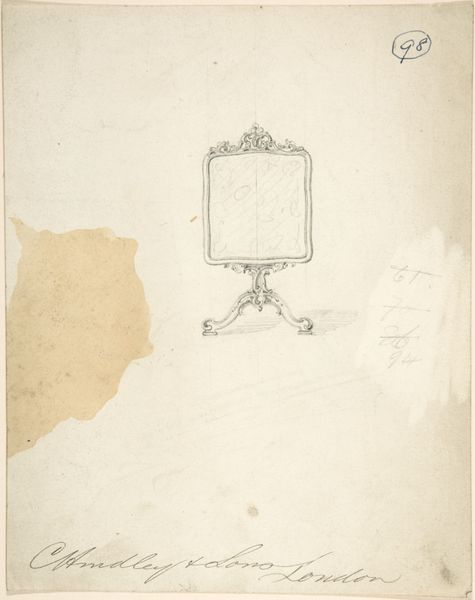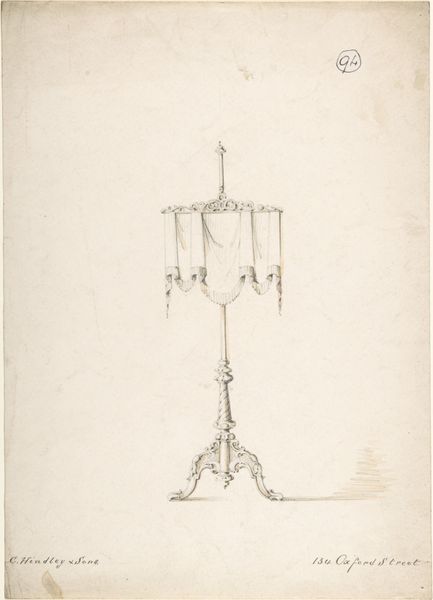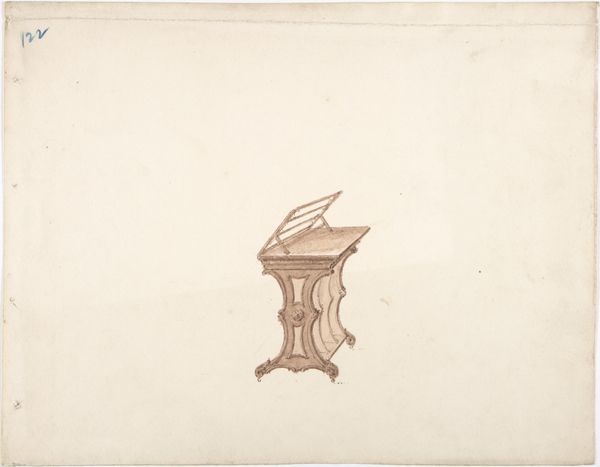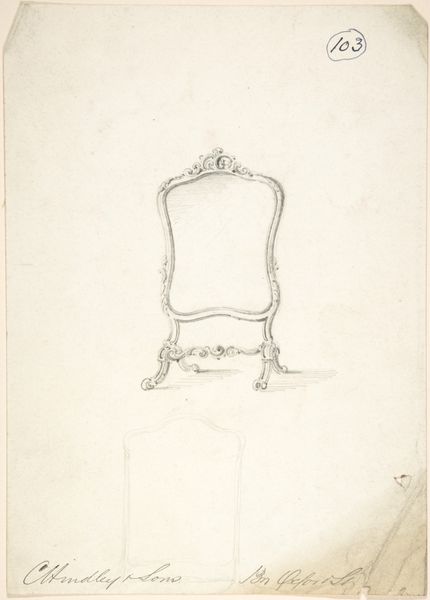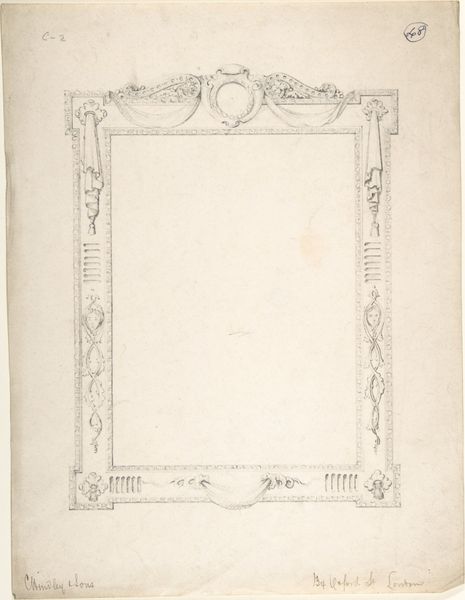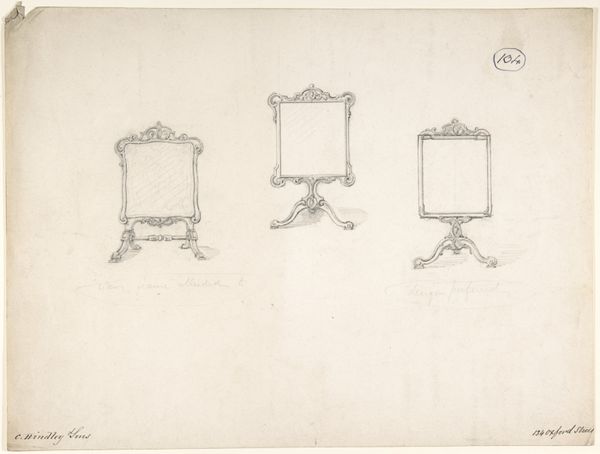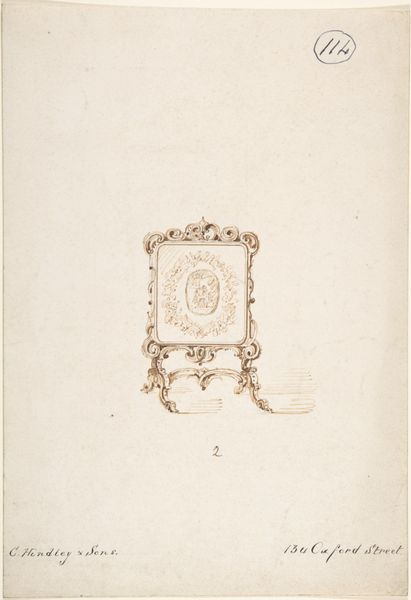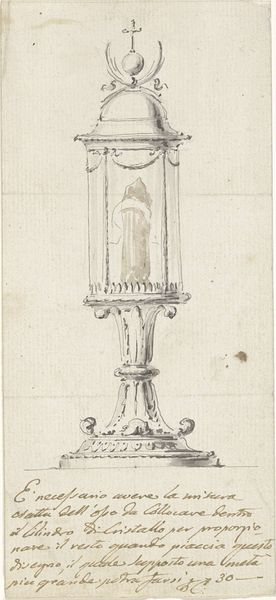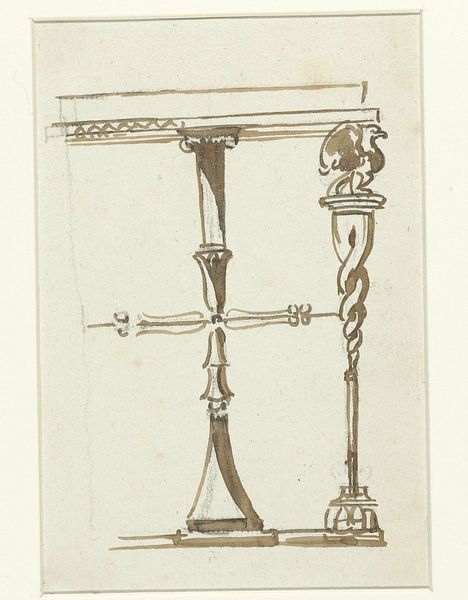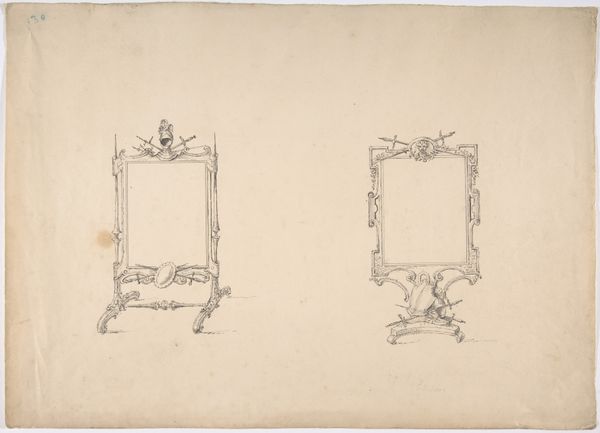
drawing, print, pencil
#
drawing
# print
#
etching
#
pencil
#
academic-art
#
decorative-art
Dimensions: sheet: 9 15/16 x 6 in. (25.2 x 15.3 cm)
Copyright: Public Domain
Curator: What strikes me first is how ornate this design is; even in sketch form, it radiates opulence. Editor: Yes, and let’s situate it. Here we have "Design for a Standing Frame," conceived by Charles Hindley and Sons between 1841 and 1884. It's a combination of pencil, print, and etching on paper, now residing at the Met. We can see their name written elegantly at the bottom of the frame. Considering the decorative style, the social function of such an object, and its accessibility during this era reveals much about class structures of the Victorian era. Curator: Absolutely. The mirror frame itself is fascinating. The square, almost theatrical framing of the image reminds me of a proscenium arch. The blurred figure inside could be anyone. Is this absence of definition purposeful? What stories does it intend to hold? Editor: The standing frame itself, though designed for display, embodies more than mere visual pleasure; it symbolizes social identity. How do items of display frame the identities and position those of the figures reflected within? This resonates with how power dynamics often get invisibilized within decorative aesthetics. Curator: The acanthus leaf details at the base, and the ornate carving at the top of the square where it attaches to the pole – are all traditional motifs that reinforce classical ideas. It brings in tropes and semiotics of class. But given that the maker may never see who ends up reflected within it, what can be said of their own identity? How does it contribute or take away from their sense of belonging and ownership? Editor: It’s true, there’s a clear intention to evoke a sense of timeless elegance, yet in its stillness and intended privacy it seems almost spectral and untouchable now. Curator: What does it say about the period? Are these purely celebratory reflections of privilege or statements regarding who can or cannot gaze upon oneself? Perhaps we're also considering the male gaze – the way women and those of marginalized genders see themselves in a mirror are always impacted by perceptions about societal expectations. Editor: Perhaps it’s an uncomfortable, and important combination of all of that and then some. In its very design we see echoes and continuities, a reflection of the societal structures of its time and, perhaps, a haunting premonition of our own.
Comments
No comments
Be the first to comment and join the conversation on the ultimate creative platform.

